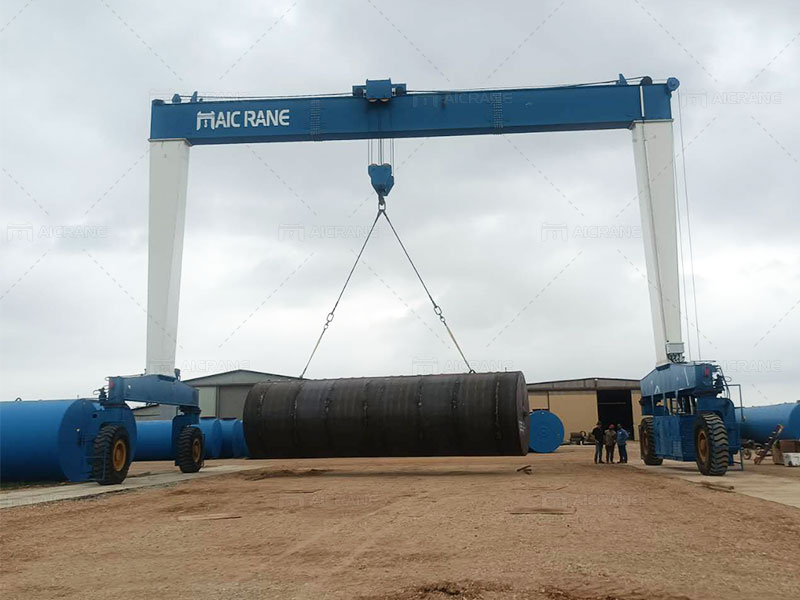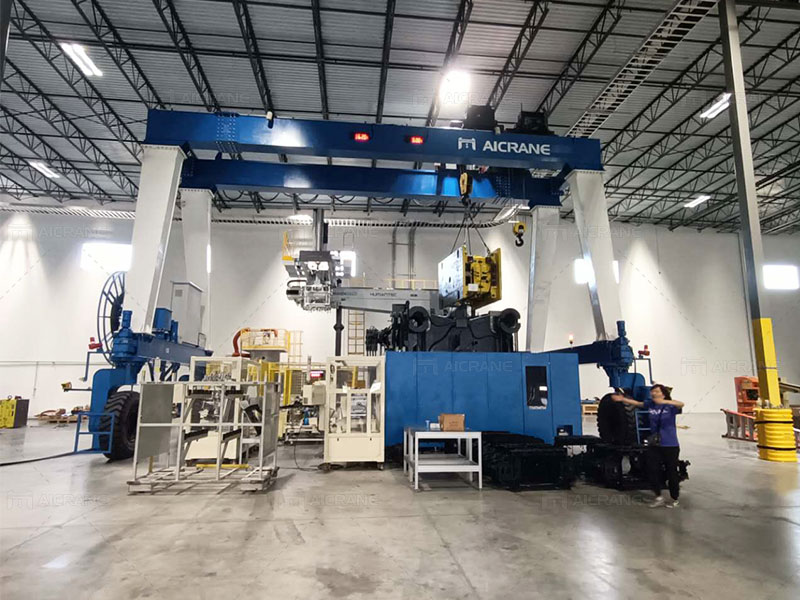Rubber tyred gantry (RTG) cranes are versatile, mobile, and efficient lifting solutions widely used in container handling, construction, and warehouse operations. Purchasing an RTG crane is a significant investment, so it’s essential to follow a well-structured process to ensure you select the right crane for your needs. This guide provides a step-by-step approach to buying a rubber tyred gantry crane, helping you navigate through specifications, costs, suppliers, and more.

Step 1: Define Your Requirements
The first step in purchasing an RTG crane is to clearly define your operational needs. Consider:
- Application: Will the crane be used for container handling, precast concrete operations, or general warehouse tasks?
- Load Capacity: Determine the maximum weight the crane must lift. RTG cranes typically range from 10 tons to over 100 tons.
- Span and Lifting Height: Define the width and height the crane needs to accommodate your operational layout.
- Mobility Needs: Assess if specific steering modes (e.g., straight, crab, or carousel) are required for maneuverability.
- Power Source: Decide between diesel, electric, or hybrid power options based on operational preferences and environmental considerations.
Step 2: Research the Market
Once you have a clear understanding of your requirements, conduct thorough research on the RTG crane market.
- Explore Manufacturers: Look for reputable gantry crane manufacturers with a strong track record in producing high-quality RTG cranes.
- Compare Features: Evaluate the features, designs, and specifications offered by different brands.
- Check Reviews and Case Studies: Learn from the experiences of other buyers and users to identify reliable suppliers.
- Study Market Trends: Stay updated on technological innovations such as automation and eco-friendly designs.
Step 3: Prepare a Budget
Setting a realistic budget is crucial to narrowing down your options. Consider:
- Initial Purchase Price: RTG crane costs vary based on capacity, features, and customizations.
- Operating Costs: Account for fuel or electricity costs, maintenance, and spare parts.
- Financing Options: Some manufacturers offer leasing, installment plans, or other financing solutions.
- Long-Term Value: A higher upfront cost might be justified by lower operating costs or better durability.

Step 4: Choose the Right Supplier
Selecting a reliable supplier is a key step in ensuring you get a high-quality product and excellent after-sales service.
- Evaluate Reputation: Check the supplier’s industry standing and years of experience.
- Inspect Certification: Ensure the supplier adheres to international safety and quality standards.
- Assess Customer Support: Good suppliers like Aicrane provide consultation, customization, and robust after-sales service.
- Visit Production Facilities: If possible, visit the manufacturer’s factory to inspect their production process.
Step 5: Request a Customized Solution
Most RTG cranes require some level of customization to fit specific operational needs. Discuss your requirements with the supplier to design a crane that meets your criteria. Customizations may include:
- Load capacity adjustments
- Specialized steering modes
- Integration of automation technologies
- Optional features like remote control or anti-sway systems
Step 6: Evaluate Quotations
Request quotations from multiple suppliers to compare gantry crane prices, features, and terms. Ensure the quotation includes:
- Technical Specifications: Detailed descriptions of the crane’s capabilities.
- Delivery Schedule: Expected lead time for production and shipping.
- Warranty Terms: Duration and coverage details of the warranty.
- After-Sales Support: Information on installation guidance, maintenance services, and spare parts availability.
Step 7: Inspect the Crane Before Delivery
Before finalizing your purchase, inspect the crane at the manufacturer’s facility (if feasible) or request a factory test report. Key aspects to verify include:
- Build Quality: Ensure the materials and components meet your standards.
- Functionality: Confirm that the crane performs as specified during load testing.
- Compliance: Check if the crane complies with safety regulations and standards.
Step 8: Plan for Delivery and Installation
Coordinate with the supplier to plan the delivery and installation process.
- Site Preparation: Ensure the operation area is ready for crane deployment.
- Transportation: Arrange for safe transportation of the crane to your facility.
- Installation Team: Decide whether to use the supplier’s team or local professionals for installation.
Step 9: Conduct Training and Commissioning
Once the crane is installed, it’s vital to ensure proper operation through training and commissioning.
- Operator Training: Train your team to operate the crane safely and efficiently.
- System Integration: Test the crane in your operational environment to verify performance.
- Documentation: Ensure you receive all operational manuals, safety guidelines, and maintenance schedules.
Step 10: Maintain and Monitor Performance
To maximize the lifespan and efficiency of your RTG crane, establish a routine maintenance schedule.
- Regular Inspections: Conduct periodic checks on critical components such as tires, engines, and lifting mechanisms.
- Preventive Maintenance: Address minor issues promptly to avoid major breakdowns.
- Performance Monitoring: Use digital monitoring tools, if available, to track performance metrics.
- Upgrade Options: Consider future upgrades for automation, energy efficiency, or capacity enhancement.
Conclusion
Buying a rubber tyred gantry crane involves careful planning, research, and collaboration with a trusted supplier. By following this step-by-step guide, you can ensure that the crane you purchase aligns with your operational needs, budget, and long-term goals. Whether you are expanding your container yard, enhancing your warehouse operations, or upgrading your construction equipment, the right RTG crane will significantly boost your efficiency and productivity.